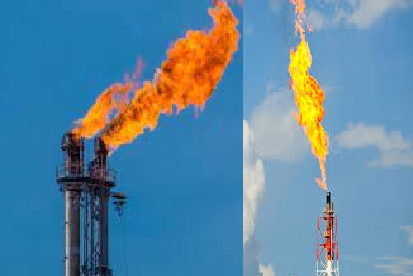Understanding Industrial Flares: Safety, Environmental Impact, and Functions
5/23/20252 min read


The Purpose of Industrial Flares
Industrial flares, often visualized as towering flames emanating from refineries and chemical plants, play a pivotal role in ensuring safety and environmental control within the industrial sector. These flares, while visually striking, are meticulously engineered systems designed to manage and dispose of flammable waste gases produced during various operational phases. They embody the industry's commitment to safety, environmental stewardship, and operational stability, ensuring that hazardous gases do not pose a risk to workers, surrounding communities, or the environment.
Functions of Industrial Flares
At their core, industrial flares serve four critical functions that underscore their importance in industrial operations. Firstly, they convert hazardous gases into less harmful compounds, primarily water vapor and carbon dioxide. This transformation occurs through a process known as high-temperature oxidation, where the flammable gases are combusted at elevated temperatures, ensuring that they are rendered safe before being released into the atmosphere. This not only mitigates risks associated with gas leaks but also plays a crucial role in reducing air pollution.
The Environmental Impact of Flaring
Secondly, industrial flares facilitate compliance with environmental regulations by controlling emissions. As regulatory frameworks around emissions become increasingly stringent, the role of flares in ensuring adherence to these standards cannot be overstated. By effectively burning off excess gases, industrial facilities can minimize their environmental footprint and avoid penalties that could arise from unregulated emissions.
Moreover, the presence of industrial flares highlights the proactive measures taken by companies within the chemical and petroleum sectors to prioritize sustainability. By efficiently handling waste gases, these flares are integral to the industry's efforts to balance production needs with environmental responsibilities. While they may visually symbolize waste, industrial flares paradoxically represent a step towards reducing overall waste through effective management practices.
Importantly, the design of industrial flares has evolved significantly over the years, driven by advancements in technology and a greater understanding of environmental impact. Modern flares are equipped with innovative features designed to enhance combustion efficiency and minimize undesirable emissions, thereby reducing their overall carbon footprint.
In summary, industrial flares are far more than a mere visual spectacle; they are essential components of an industrial facility's operational framework. Their ability to convert hazardous gases into less harmful substances, ensure compliance with environmental regulations, and illustrate a commitment to sustainability makes them critical to the safe operation of refineries and chemical plants. As technology continues to advance, the role of industrial flares will undoubtedly evolve, further enhancing their efficacy in managing waste gases while supporting the industry's environmental objectives.
Shivshakti Engineering Company
.... innovative combustion solutions
CONTACT US
© 2025. Shivshakti. All rights reserved.
Useful Links
16/1A Abdul Hamid Street Room 1 D, First Floor Kolkata - 700069. India.
Telephone: +91 33 2248 1116 Helpline: +91 94330 36040/ 41
Email: sales@shivenergy.com
Our Products
Ladle Preheater
Tundish Preheater
SEN Preheating
Hot Gas Generator
Rotary Kiln Burner
Flare Stack Burner
Industrial Burner
Burner Management System
Our Services
Furnace Design & Modification
Furnace Repairing
Fuel and Energy Saving guidance
